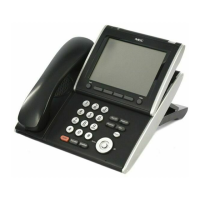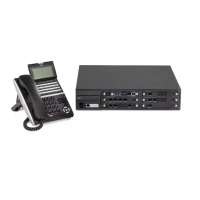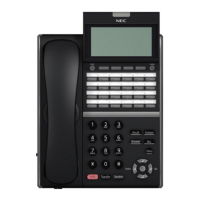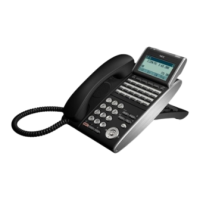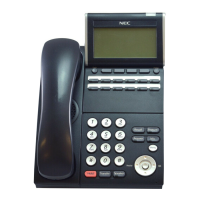DTMF and Dial Tone Circuit Setup
If the system has 2500 type (DTMF) single line
extensions, allocate at least one circuit for
analog extension DTMF reception (0 or 1).
Use the following as a guide when allocating
DTMF receivers:
In light traffic sites, allocate one DTMF
receiver for every 10 devices that use them.
In heavy traffic sites, allocate one DTMF
receiver for every five devices that use
them.
The GCD-CP10 has 32 resources for DTMF
receiving and Dial Tone detection. When a
GPZ-BS10 is installed there are 64 resources
available.
When Program 10-09-01 is set to 0 (Common)
and Program 14-02-10 (Caller ID) is set to 1 (Yes),
all DTMF/Dial Tone Detection resources are always
allocated to analog trunks, not analog extensions.
However, if Program 14-02-10 (Caller ID) is set to 0
(No), all DTMF/Dial Tone Detection resources can
be used for both analog trunks and analog
extensions.
Single Line Telephone Basic Data Setup –
SLT Signaling Type
Enter 0 if single line telephone is a 500 type
(dial pulse). Enter 1 if single line telephone is a
2500 type (DTMF).
Set In-Skin Voice Mail and InMail to 0.
Single Line Telephone Basic Data Setup –
Terminal Type
Enter 1 for this option to allow a single line port
to receive DTMF tones after the initial call
setup. Enter 0 to have the port ignore DTMF
tones after the initial call setup. For Voice Mail,
always enter 1 (e.g., receive DTMF tones).
Single Line Telephone Basic Data Setup –
Trunk Polarity Reverse
-- Not Used in U.S. -- Do Not Change Default
Entry as DTMF issues may arise with voice
mail.
Single Line Telephone Basic Data Setup –
Extension Polarity Reverse
-- Not Used in U.S. -- Do Not Change Default
Entry as DTMF issues may arise with voice
mail.
Single Line Telephone Basic Data Setup –
Enabled On-Hook When Holding (SLT)
Enable/Disable this program step.

